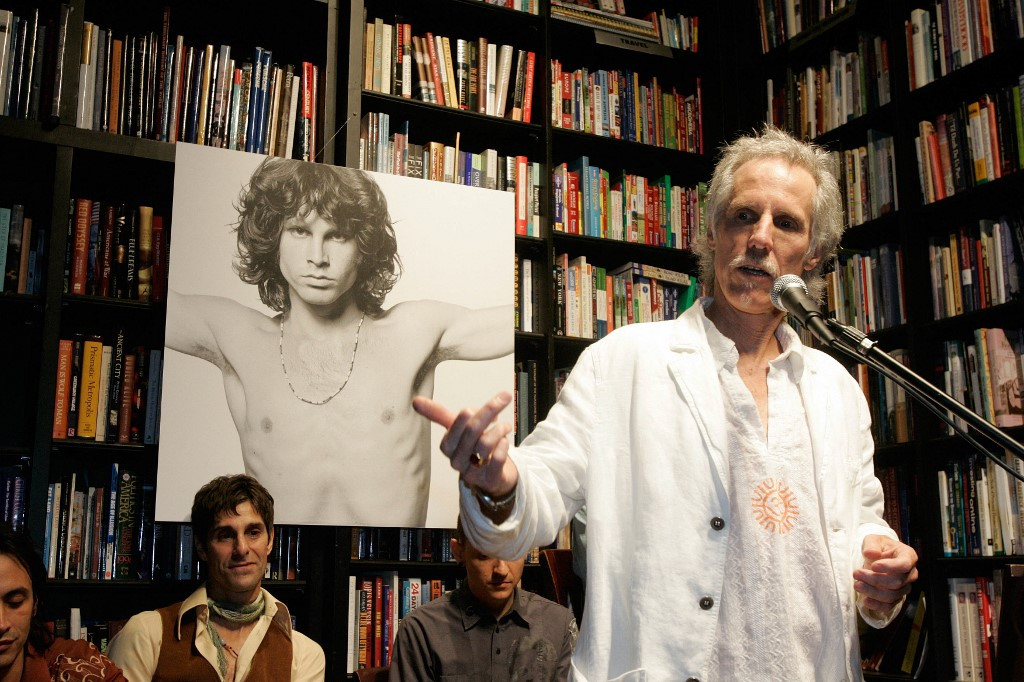 Jim Morrison, the enigmatic frontman of The Doors, continues to fascinate generations over 50 years after his untimely death. His life, filled with poetry, rebellion, and an unparalleled stage presence, left an indelible mark on rock music and popular culture. Yet, even as his fame soared, Morrison remained a mystery—both to those closest to him and to the world. His sudden death at 27 only deepened the intrigue, spawning rumors, myths, and a lasting fascination with the man who called himself “The Lizard King.”
Jim Morrison, the enigmatic frontman of The Doors, continues to fascinate generations over 50 years after his untimely death. His life, filled with poetry, rebellion, and an unparalleled stage presence, left an indelible mark on rock music and popular culture. Yet, even as his fame soared, Morrison remained a mystery—both to those closest to him and to the world. His sudden death at 27 only deepened the intrigue, spawning rumors, myths, and a lasting fascination with the man who called himself “The Lizard King.”
### Early Life: A Rebel in the Making
Born on December 8, 1943, in Melbourne, Florida, James Douglas Morrison was raised in a strict military household. His father, George Morrison, was a high-ranking admiral in the U.S. Navy, and his family moved frequently due to his father’s career. From a young age, Jim showed signs of rebellion and an intellectual thirst for philosophy, literature, and poetry. His fascination with writers like Arthur Rimbaud, William Blake, and Friedrich Nietzsche would later shape his worldview and musical career.
In 1964, Morrison relocated to Los Angeles, where he studied film at UCLA. It was here that he met Ray Manzarek, a keyboardist, and the two formed the nucleus of what would become The Doors. Joined by drummer John Densmore and guitarist Robby Krieger, the band quickly gained a reputation for their dark, hypnotic sound, thanks in no small part to Morrison’s deep, haunting voice and poetic lyrics. Songs like “Light My Fire,” “Break On Through,” and “The End” showcased Morrison’s lyrical brilliance, blending existential musings with a psychedelic edge that captured the spirit of the 1960s.
### The Rise and Fall of a Rock Icon
While Morrison’s talent as a lyricist and performer catapulted him to rock stardom, his erratic behavior, fueled by heavy drinking and drug use, cast a shadow over his career. He frequently found himself at odds with the law, most famously in 1969 when he was arrested for allegedly exposing himself on stage in Miami. His courtroom battles and clashes with authority further solidified his image as a rebellious icon, but they also began to take a toll on his mental and physical health.
Behind the scenes, Morrison’s life was spiraling out of control. His relationships were tumultuous, particularly with his longtime partner, Pamela Courson. His drug use escalated, and by 1971, The Doors had released their final album with Morrison, *L.A. Woman*, which featured the haunting track “Riders on the Storm.” Shortly after its release, Morrison fled to Paris, hoping to escape the pressures of fame and work on his poetry.
### The Mysterious Death in Paris
On July 3, 1971, Morrison was found dead in the bathtub of his Paris apartment, with the official cause listed as heart failure. However, no autopsy was performed, leading to decades of speculation. Rumors swirled that Morrison may have overdosed on heroin, a drug he was known to dabble in, or that he faked his death to escape the rock-star lifestyle. Some have even suggested that Morrison’s death was part of a conspiracy, with hints of CIA involvement or occult practices, though these claims remain unfounded.
Pamela Courson, who was with Morrison at the time, provided conflicting accounts of his final moments. She herself died of a heroin overdose just three years later, adding to the tragic aura surrounding Morrison’s story. Many of his closest friends and bandmates believe that his lifestyle inevitably caught up with him, and that his death was a natural, albeit premature, conclusion to a life lived at the edge.
### The Enduring Legacy
Despite his short life, Jim Morrison’s influence on music, poetry, and popular culture remains profound. His lyrics continue to inspire new generations of fans, and The Doors’ music has transcended its era to become timeless. Morrison’s image as a rebel, poet, and cultural provocateur is preserved in countless biographies, documentaries, and films, including Oliver Stone’s 1991 biopic *The Doors*.
For many, Morrison’s mysterious death only adds to his allure. He remains a symbol of the 1960s counterculture—an artist who embodied freedom, excess, and the search for deeper meaning in life. Jim Morrison may have ridden the storm to an early grave, but his legacy, much like his music, lives on.
